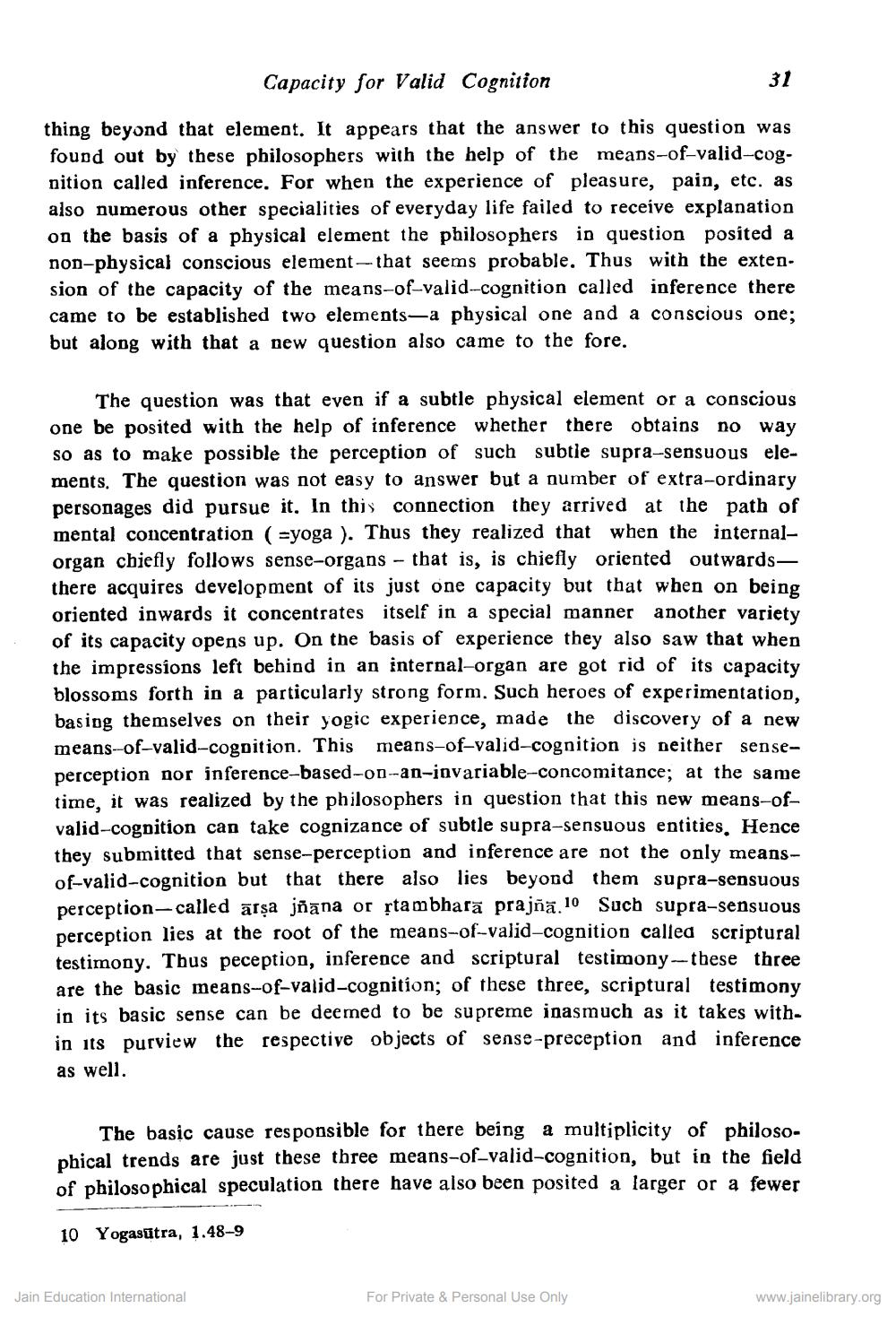________________
Capacity for Valid Cognition
31
thing beyond that element. It appears that the answer to this question was found out by these philosophers with the help of the means-of-valid-cog. nition called inference. For when the experience of pleasure, pain, etc. as also numerous other specialities of everyday life failed to receive explanation
is of a physical element the philosophers in question posited a non-physical conscious element that seems probable. Thus with the extension of the capacity of the means-of-valid-cognition called inference there came to be established two elements—a physical one and a conscious one; but along with that a new question also came to the fore.
The question was that even if a subtle physical element or a conscious one be posited with the help of inference whether there obtains no way so as to make possible the perception of such subtie supra-sensuous elements. The question was not easy to answer but a number of extra-ordinary personages did pursue it. In this connection they arrived at the path of mental concentration ( =yoga ). Thus they realized that when the internalorgan chiefly follows sense-organs - that is, is chiefly oriented outwardsthere acquires development of its just one capacity but that when on being oriented inwards it concentrates itself in a special manner another variety of its capacity opens up. On the basis of experience they also saw that when the impressions left behind in an internal-organ are got rid of its capacity blossoms forth in a particularly strong form. Such heroes of experimentation, basing themselves on their yogic experience, made the discovery of a new means-of-valid-cogoition. This means-of-valid-cognition is neither senseperception nor inference-based-on--an-invariable-concomitance; at the same time, it was realized by the philosophers in question that this new means-ofvalid-cognition can take cognizance of subtle supra-sensuous entities. Hence they submitted that sense-perception and inference are not the only meansof-valid-cognition but that there also lies beyond them supra-sensuous perception-called ārșa jñāna or stambharā prajñā. 10 Such supra-sensuous perception lies at the root of the means-of-valid-cognition called scriptural testimony. Thus peception, inference and scriptural testimony--these three are the basic means-of-valid-cognition; of these three, scriptural testimony in its basic sense can be deemed to be supreme inasmuch as it takes within its purview the respective objects of sense-preception and inference as well.
The basic cause responsible for there being a multiplicity of philosophical trends are just these three means-of-valid-cognition, but in the field of philosophical speculation there have also been posited a larger or a fewer
10
Yogasūtra, 1.48-9
Jain Education International
For Private & Personal Use Only
www.jainelibrary.org




